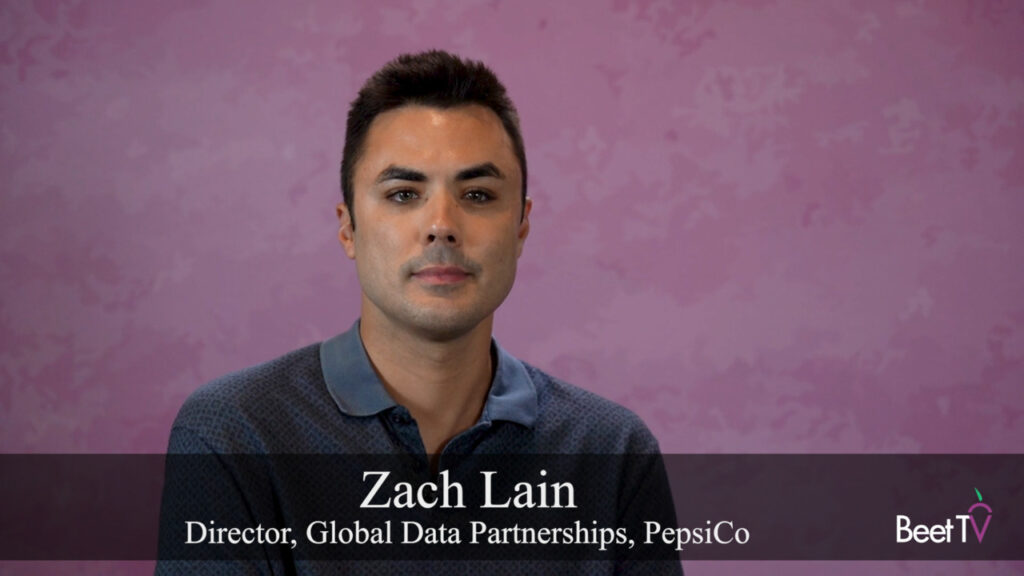Sports fans will find a way to watch their favorite players and teams despite significant disruptions, as seen in the past year. That commitment gives marketers a chance to connect with consumers even as they divide their viewing time among multiple devices. Amid these shifts, media and marketing executives from a variety of companies have shared their insights with Beet.TV on what to expect with sports marketing as more fans are allowed back in stands, and the sports calendar gets back to a more normal schedule.
This article and accompanying video highlight interviews from this series
The series was produced by Beet.TV in partnership with the VAB and sponsored by Comcast’s Effectv.
Dan Lovinger, NBC Sports and NBCUniversal
NBC Sports was among the broadcasters that scrambled to reinvent its programming during the pandemic, recognizing the need for sports as people seek escapist entertainment during trying times.
“History proves that people need sports the most. There’s always this huge desire for sports coming from fans,” Dan Lovinger, executive vice president of advertising sales at NBC Sports Group, said.
He pointed to multiple occasions when sports viewership bounced back from interruptions ranging from player strikes to major disasters.
“What was different this time was that sports stopped for a long, long time — and that left the leagues, the fans, the owners in a much different position,” Lovinger said. “All those people did a terrific job in trying to wade through this no-sports environment.”
Jason Wiese, VAB
Sports have broad appeal, giving advertisers a way to reach a mass audience of consumers who are passionate about their favorite teams and players.
“When I think about the value of sports to marketers, I come back to scale, the audience composition and the incredible emotional engagement of sports,” Jason Wiese, senior vice president and director of strategic insights at VAB, said. “[Sports] is some of the most watched programming content across video platforms.”
Eighty percent of sports fans said that during the pandemic, TV was the centerpiece of the their households, VAB found in a study. Meanwhile, 63% of sports fans have bought a bigger TV screen to watch games, and many don’t mind viewing other events on a smartphone or tablet at the same time.
Melanie Hamilton, Effectv
Live sports have the power to reach a broad audience, making them a key part of the media strategies for mass marketers. When sports were suspended last year during the onset of the pandemic, marketers looked for other ways to reach those audiences.
“With everybody inside, viewership was on the rise and marketers needed to reach those sports fans,” Melanie Hamilton, head of enterprise sales at Effectv, the advertising sales division of Comcast Cable, said. “That’s really where data as our backbone and our set-top boxes came into play, and we were able to deliver this in real time to the buy-side community.”
Tina Shah, Turner Sports
Bringing live sports back to television last year required a significant effort by broadcasters, sports leagues and advertisers to pivot quickly to engage with fans. Turner Sports, the division of AT&T’s WarnerMedia, worked with sponsors to develop innovative campaigns that could be activated within the confines of the arenas that were mostly empty.
Advertisers can find ways to parlay that engagement with the “opportunity for an ‘always-on’ investment, whether the games are on or not,” Tina Shah, executive vice president and general manager of Turner Sports, said. “We’ve historically had large-scale media partnerships that are multifaceted with advertisers that really let us establish a lot of trust with the advertiser, and get a deep understanding of their goals, and really tailor solutions that meet their needs.”
Jon Stainer, Nielsen Sports Americas
Because many sponsorship deals with sports leagues consist of multiyear contracts, the level of investment in sports wasn’t affected dramatically. Instead, part of the spending shifting to digital channels that become key touch points with fans.
“The big opportunity for brands is surviving and thriving in this hybrid world that we’re going to live in, where live events and attending live entertainment are going to be very important, but so is playing in virtual world,” Jon Stainer, managing director of Nielsen Sports Americas, said. “The big thing for the sports industry is how they best play in the virtual and digital environment, alongside the live environment where they’ve thrived for so many years.”
Danielle Brown, Disney Advertising Sales
The absence of live sports challenged sports leagues and broadcasters to provide programming that partly filled the void. For Disney’s ESPN, that meant getting creative with its approach to providing everything from documentaries like “The Last Dance” about NBA legend Michael Jordan and the Chicago Bulls to reformatting events like the NFL Draft.
“Sports definitely has evolved a lot over the past few months,” Danielle Brown, vice president at Disney Advertising Sales, said. “It continues to be an effective reach vehicle across all platforms.”
ESPN’s internal research found that 90% of consumers describe themselves as sports fans, giving it a broad market to serve with programming.
Tom McGovern, Optimum Sports
Sports marketing traditionally has been experiential in its engagement with fans who attend games, but the disruptions of the pandemic led to more experimentation.
“We worked with a number of clients on: how do we get more innovative in how we engage consumers with brands?” Tom McGovern, president of Optimum Sports, the sports marketing agency of Omnicom Media Group, said. “How do we create and market outside of those 30-second pods, which is something we’ve always looked to do, anyway? But what other opportunities have come out of this to create some storytelling for the brand that is authentic?”
Adam Schwartz, Horizon Media
The immediacy of live sports is hard for other kinds of content to replace, with 97% of sports viewing happening in real time.
“Sports is a very important part of a number of my advertisers’ portfolios. The broad reach is certainly a big part of that, but also the passion of the people who watch and consume sports,” Adam Schwartz, senior vice president and director of sports media at Horizon Media, the world’s biggest independent media services company, said.
Seth Winter, Fox Sports
Live sports is one of the strongest genres on linear TV for advertisers seeking to reach a mass audience. While other genres of programming like drama and sitcoms face competition from streaming services, sports has endured in providing immediacy and excitement to fans.
“What I think that advertisers most sought in this Covid environment was the ability to deliver impressions,” Seth Winter, executive vice president of sports sales at Fox Sports, said. “With some of the challenges of not being able to execute on-site sponsorships in the manner in which we had originally negotiated, the advertisers very much worked with us.”
Gibbs Haljun, Mindshare
The pandemic’s disruptions pushed marketers and their agencies to come up other ways to engage consumers, and optimize their advertising efforts.
“The pandemic created the opportunity to pivot and actually compress the timelines to do things in a quicker, faster, more agile fashion, which really benefited all of our clients.” Gibbs Haljun, total investment lead of GroupM’s Mindshare, said. “That’s one of the great things that’s come out of this pandemic, that renewed sense of partnership. It’s not about saying, ‘no.’ It’s about saying, ‘yes, and…’ The reality is not every network, every client will be a great fit, but there are so many that are, that there’s always a solution.”
Mike Law, Amplifi USA
Sports fans will find a way to watch their favorite players and teams, giving advertisers a way to participate in programming among a wider variety of devices. Amid the fragmentation of the media market, audience-based targeting is central to reaching those fans, especially younger consumers.
“Whatever you’re a fan of today, you can find that sport. Younger audiences like that — because they want to control the experience,” Mike Law, president of Amplifi USA, the media buying agency owned by Dentsu, said. “It’s still one of the few places where you can create such excitement and buzz.”
James Rooke, Effectv
Sports programming is an important anchor for advertisers in reaching audiences, not only when fans watch their favorite teams, but also when they consume other kinds of content. Reaching them takes an audience-based approach — and that become much more apparent last year when the pandemic capsized the sports calendar.
“Sports remains such an important anchor for advertisers who either want to target specific sports content, or take a more audience-base approach,” James Rooke, general manager of Effectv, the advertising sales division of Comcast Cable, said. “What our aggregate set-top box data from Comcast allows us to do is derive really important insights into viewing behaviors of those sports viewers.”
You are watching “Live Sports 2021: What’s Next on TV,” a Beet.TV + VAB leadership series presented by Effectv. For more videos, please visit this page.









































